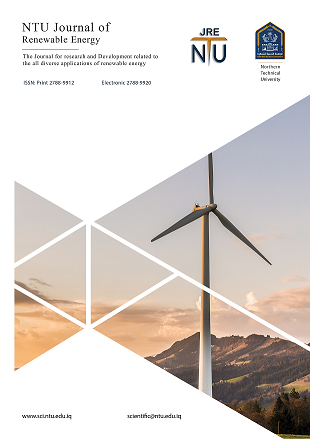Study and Analysis thermal performance of Taza gas power plant in Kirkuk –Iraq
DOI:
https://doi.org/10.56286/ftcahk66Keywords:
Compressor, Combustion Chamber, Net power, Thermal efficiencyAbstract
In this research, the concept of energy balance was implemented in one of the gas turbine electricity generation units in Iraq (Kirkuk - Taza) K1. The design operating data is taken and compared with the data calculated in the computer model used by Engineering Equation Solutions (EES), and the validity of the model used was confirmed. The results indicate the release of a large amount of thermal energy into the atmosphere due to the open Brayton cycle, as energy losses amounted to 60% of the energy input. The results based on the data of the first unit of the station demonstrated that the theoretical efficiency of the unit is a function of the two variables, which are the temperature of the air entering the compressor and the Turbine inlet temperature: Increasing the compressor inlet temperature leads to a decrease in net power output and first-law efficiency and an increase in the specific fuel consumption rate. Increasing the turbine inlet temperature to 1°C leads to an improvement in both net power output and first-law efficiency by (0.24MW, and 0.04) %), respectively. The results also showed that cooling the air entering the compressor for 1°C leads to improving power output and first law efficiency by (0.72MW, and 0.12%), respectively, and reduces specific fuel consumption by 7.8kg/MWh.
Downloads
Published
Issue
Section
License
Copyright (c) 2024 NTU Journal of Renewable Energy

This work is licensed under a Creative Commons Attribution 4.0 International License.








